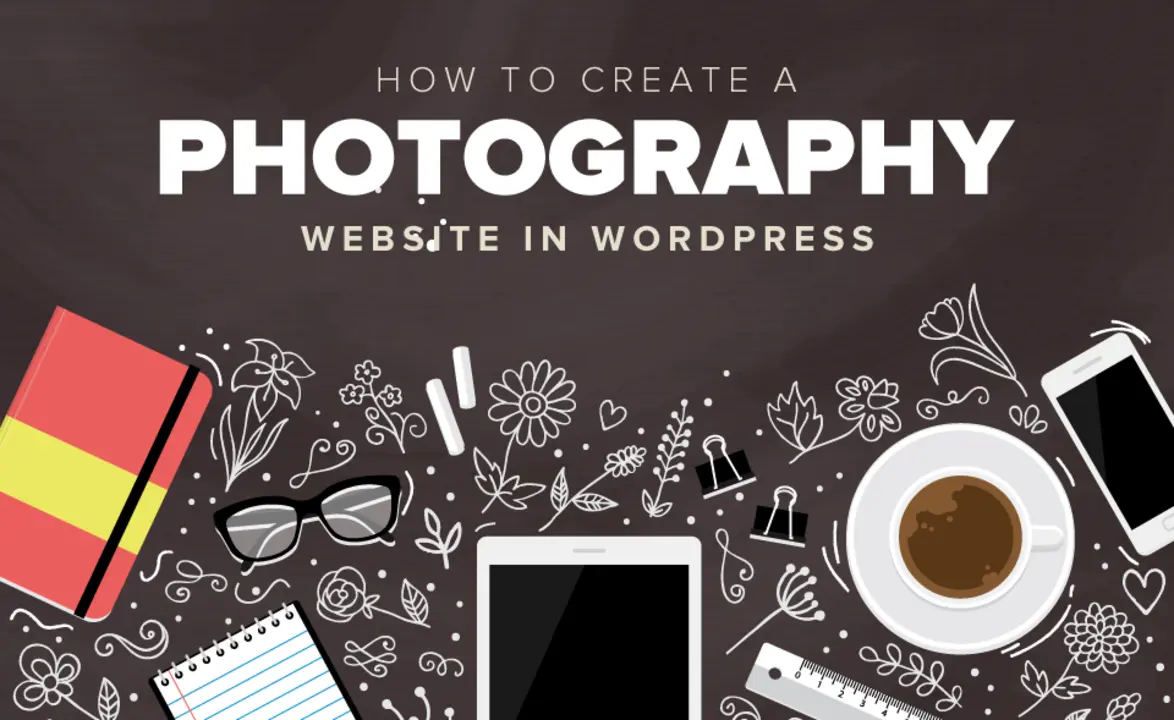How should I set up a photography website?

5 Steps to Setting Up a Professional Photography Website
Are you a photographer looking to make your work stand out from the crowd? Setting up your own photography website is an essential part of building your business and connecting with potential customers. Here are five steps to get you started in building a professional photography website.
1. Choose a Domain Name
Your domain name is the address of your website. When choosing a domain name for your photography website, you want something that is creative and memorable. Try to include your name or the type of photography you specialize in. You can use a domain name generator to help you come up with ideas. Make sure to double-check the availability of your chosen domain name before moving on to the next step.
2. Select Web Hosting
Once you have chosen your domain name, you need to select web hosting. Web hosting is where your website’s files will be stored. When selecting web hosting you should consider the type of website you’re creating, the amount of storage space you need, and the amount of traffic your website will receive. It’s important to select the right web hosting to ensure your website runs quickly and smoothly.
3. Pick a Website Builder
Now it’s time to pick a website builder. Website builders are software tools that allow you to create a website without any coding or design experience. They usually come with drag-and-drop features, allowing you to add content and customize your website in minutes. Some popular website builders for photographers include Squarespace, Wix, and Weebly.
4. Design Your Website
Once you’ve picked a website builder, you can begin designing your website. Start by creating an attractive and user-friendly homepage. Include a clear call-to-action and make sure to add your contact information. You should also create separate pages for your portfolio, services and rates, and your blog. Make sure to include plenty of high-quality photos and videos to showcase your work.
5. Optimize for SEO
The last step in setting up your photography website is to optimize it for SEO (search engine optimization). SEO helps your website appear higher on search engine results pages, so you can attract more visitors. You can optimize your website by including relevant keywords in your website’s content and descriptions. You should also make sure to include meta tags and alt tags on your photos.
How to Choose the Right Platform for Your Photography Website
As a photographer, creating an online portfolio is an essential part of building a successful business. This allows potential clients to view your work, read about your services, and contact you for projects. But before you can start building a website, you need to choose the right platform. There are a variety of options available, so it’s important to consider your needs and budget before making a decision.
The first step is to determine what type of website you want. Do you want to create a portfolio site to showcase your work, or do you want to build a website with more functionality, such as an e-commerce store or a blog? Depending on the type of website you’re creating, you may need to choose a different platform.
Once you’ve determined the type of website you want, you can start looking at the different platforms available. You can choose from a variety of hosted solutions or self-hosted solutions. Hosted solutions are typically the easier option, as they take care of hosting, domain registration, and security. Self-hosted solutions provide more control and customization options, but they require more technical knowledge. So it’s important to consider your own skillset before deciding which platform to use.
When it comes to selecting a platform, you should also consider the features you’ll need. Do you want to be able to accept payments online? Do you need to be able to manage a large number of images? Do you need access to a wide range of plugins and integrations? Consider your needs and make sure the platform you choose has the features you need.
Finally, you should consider the cost. Some platforms offer free plans, while others require a monthly fee. Make sure you research the different options and choose the one that’s best for your budget. Don’t forget to factor in the cost of any additional services you might need, such as hosting or domain registration.
Choosing the right platform for your photography website is an important decision. Take the time to consider your needs and budget, and make sure you choose a platform that will meet them. With a little research and some careful consideration, you can find the perfect platform for your website.
Strategies for Optimizing Your Photography Website for Maximum Visibility
An effective photography website is essential for any aspiring photographer. It helps to build online presence, attract potential customers, and showcase your work. To ensure maximum visibility, there are several strategies you should consider when setting up your website.
Choose a Professional Photography Website Design: Your website design should be professional, attractive, and user-friendly. Choose a design that makes it easy for visitors to find the information they are looking for. It should also showcase your work in the best light, with high-resolution images.
Choose the Right Domain Name: A domain name is the web address that people type into a browser to access your website. Choose a domain name that is easy to remember, relevant to your business, and reflects your brand. It should also be short and catchy.
Choose Quality Web Hosting: Quality web hosting is essential for a high-performing photography website. Choose a web hosting company that offers great uptime and customer service. Also, make sure they offer the features you need, such as unlimited bandwidth and storage space.
Optimize for Search Engines: To ensure your website is visible to potential customers, you need to optimize it for search engines. This includes using relevant keywords, creating high-quality content, and optimizing images for SEO. Also, consider using social media to increase visibility and reach a larger audience.
Make Your Website Mobile Friendly: The majority of internet users now access websites from their mobile devices. To ensure your website looks great on all devices, make sure it is mobile friendly. This means optimizing images, making sure the design is responsive, and making sure content is easy to read on small screens.
Provide Quality Content: Quality content is essential for any website, especially a photography website. Provide valuable information about your services, showcase your best work, and create engaging blog posts. This will help to attract potential customers and improve your search engine rankings.
Promote Your Website: Once your website is live, it’s time to promote it. Create a marketing plan and use social media, advertising, and email marketing to reach potential customers. Also, consider working with influencers in the photography industry to help spread the word.
By following these strategies, you can set up a high-performing photography website that will help you to attract potential customers and showcase your work. With the right design, content, and promotion, your website will be visible to the right people, helping you to build your business.
